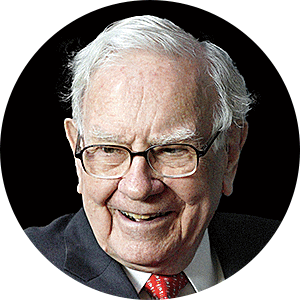Business development companies offer great dividends, plus bonuses to income hungry investors. Tempting, but look closely before you leap.
With interest rates at heights not seen in nearly two decades and traditional len-ders still shell-shocked from this past spring’s bank runs, private credit, or nonbank direct lending, is booming on Wall Street. Yield-chasing institutions have poured into the sector, which now amounts to $1.5 trillion globally. But pension funds, endowments and other big players need not be the only investors feasting on high yields.
A great way retail investors can partake in private credit’s spoils is by buying the stocks of business development com-panies (BDCs). These outfits are required to lend to small or medium-sized businesses, which usually don’t have access to public debt markets. There are more than 130 BDCs, according to the Small Business Investor Alliance. The largest is the $48 billion Blackstone Private Credit Fund (BCRED), which yields about 10% currently. That fund is sold exclusively through financial advisors and limits redemptions at book value to once per quarter. But Blackstone and every other major private equity firm—including KKR and Apollo—plus credit specialists like Ares Management and Blue Owl also offer publicly traded BDCs with daily liquidity. These funds are currently offering annualized yields from about 6% to more than 16%.
Blue-Chip BDCs
Most BDCs are required to pay out 90% of their earnings to investors as dividends, and the majority of loans in a typical BDC’s portfolio are floating-rate, giving them a measure of protection against interest rate swings. Many BDCs, such as Blue Owl Capital (OBDC), which has $12.9 billion in assets, have raised their dividends this year and are also throwing in supplemental or “bonus” dividends, promising to pay out 50% of any excess earnings beyond the base amount. The bonuses reward investors during good times but also let BDCs avoid dividend cuts later when interest rates retreat. OBDC’s base dividend for the third quarter was raised to 35 cents per share and came with an 8-cent bonus, implying an annualized dividend of $1.72 or a 12% yield at its current price of $14.38. OBDC trades at a 7% discount to its book or net asset value.
“You’re earning equity-like returns in a defensive portfolio of loans,” crows Craig Packer, co-president of Blue Owl and CEO of OBDC, which has 83% of its portfolio in senior debt, the type that gets paid early in a bankruptcy. Blue Owl, which went public in 2019, had a 12.7% return on equity in the third quarter. It specializes in lending to software companies and noncyclical sectors like insurance brokers, which have consistent recurring revenue streams. Ares Capital (ARCC), the largest publicly traded BDC with $21.9 billion in assets, has an 11.2% average six-year return on equity, though its stock trades at a 3% premium to book value.
—Warren Buffett
Higher interest rates and a strong economy have meant happy days for BDC investors recently, but don’t count on them lasting forever. The average return on equity since IPO of 28 BDCs tracked by Oppenheimer is just 7.4%. “Many BDCs were annihilated during the financial crisis,” notes Benjamin Nobel, cofounder of BDC-Investor.com. In fact, according to a recent report by Edward D. Jones, the average BDC swung from a 40% premium, just prior to the crisis, to a 70% discount by the end of 2008.
“It’s a very inefficient market because there are a lot of investors who just look at the dividend and assume that’s what the BDC is going to earn, when in fact that’s not the case,” says Oppenheimer analyst Mitchel Penn. “If a BDC doesn’t earn its dividend, it’s returning capital.”
Reliable performers Penn recommends in addition to Blue Owl and Ares are Golub Capital BDC (GBDC), Oaktree Specialty Lending (OCSL) and Sixth Street Specialty Len-ding (TSLX). Golub and Sixth Street are among a select few BDCs with more than 90% of their portfolios in first lien loans, meaning they’re first in line to be repaid if a borrower defaults.
Another important factor to consider is a BDC’s debt-to-equity ratio, which was capped at 1:1 before the Small Business Credit Availability Act in 2018 upped that limit to 2:1. Still, most BDCs don’t let debt get much higher than 1.3 times their book value—Blue Owl has a 1.13x debt to equity ratio, and Ares’ is 1.07. Any firm getting close to the 2x limit would be vulnera-ble to markdowns if a recession hits, which could require it to liquidate assets to raise cash.
—Rajiv Jain
“In order to get an investment grade rating from Moody’s or S&P, you typically have to keep your leverage below 1.3 times,” Penn says. “BDCs really want to keep that rating so they have access to the bond market.”
Investors preferring diversification can buy their BDCs through the VanEck BDC Income ETF (BIZD), which has $757 million in assets in a portfolio of 25 stocks. The three largest—ARCC, OBDC and FS KKR Capital (KKR)—make up 45% of assets. Total return year to date is 22%, including a 10.5% dividend yield, beating the S&P 500’s 19%. But over the last decade its total return has averaged 6.8%, versus 11.7% for the S&P.
Most institutions steer clear of BDCs because owning these private credit stocks would classify them as a fund of funds, requiring them to report “acquired fund fees and expenses,” or the indirect operating expenses and management fees charged by each BDC. VanEck’s reported expense ratio is a sky-high 11.17% even though the ETF’s own direct fees are only 0.42% of assets. This unwieldy reporting feature has caused major stock indices to shun BDCs, making them a rare corner of the market where small investors still rule.

